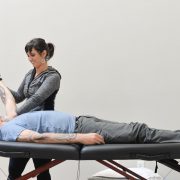Opioid Addiction in Adults over 40: a Public Health Emergency
The COVID-19 pandemic has been top of mind for months. We’ve all experienced some major curveballs this year, and most people have learned a lot about public health and epidemiology along the way. But why now? Why are we finally learning how viruses attack the respiratory system, what it means to be immunocompromised, and the best practices for disinfecting? Maybe it’s because of the unpredictability and common threat associated with this virus. Although some demographics have an increased risk of serious outcomes, anyone can get this novel coronavirus and anyone can become ill.
Unfortunately, Covid isn’t the only public health crisis facing Americans in 2020.
The opioid epidemic has been in the news for years, but many of us don’t bother to take precautions or educate ourselves because we don’t think opioid addiction can happen to us.
That couldn’t be further from the truth!
Anyone can become addicted to opioids. Many of the Americans battling addiction right now don’t have a history of drug abuse. Instead, what they have in common is something relatively routine. They deal with chronic pain or they had a surgery, and a physician prescribed them opioids.
According to the US Department of Health and Human Services, “opioid overdoses accounted for more than 42,000 deaths in 2016” and “an estimated 40% of opioid overdose deaths involved a prescription opioid.” Between 2010 and 2016, opiate prescriptions from surgeons rose by over 18 percent (UCI Health). And according to the National Institute on Drug Abuse, approximately 21 to 29 percent of patients who are prescribed opioids by physicians end up misusing them. Eight to 12 percent become addicted (NIDA). And the reality of opioid addiction is sobering. In 2017 alone, over 47,000 people in the United States overdosed on opioids and died.
In 2017, the opioid epidemic was declared a public health emergency.
A public health emergency is just that — public! The emergent status of this crisis is not limited to one demographic or “type” of person. Although media attention through TV and movies tends to focus on heroin and young people getting high, data from the Substance Abuse and Mental Health Services Administration tells us that 63.4% of the adults who misused prescription opioids in 2015 did so to relieve legitimate physical pain. Chances are, we’ve all felt pain at one time or another that ibuprofen or tylenol alone couldn’t get rid of. Everyone is at risk for opioid addiction because anyone could get in a car accident, or require surgery, or develop arthritis.
Pain-relieving drugs like Oxycodone, Oxycontin, Vicodin, Percocet, and others can be extremely helpful in some circumstances. But unfortunately, they are often overprescribed thanks to aggressive incentivising and pressure from drug manufacturers. The fact that opioids are so often prescribed after surgery and for patients with chronic pain means that middle aged and older adults are at a higher risk for drug addiction than ever before. In 2016, 14.4 million adults on Medicare (age 65+) had at least one opioid prescription (Consumer Voice). Older adults are also more sensitive to the physical effects of opioids. Side effects such as respiratory depression and cognitive impairment increase in severity as the patient’s age increases, often leading to hospitalizations and even deaths.
So many clients in our practice fall into this at-risk demographic.
We have countless clients coming to us with severe chronic pain. Some have already had surgeries or been told that surgery is their only route to a pain-free life. Many have considered opioids to treat their back pain. And we are so grateful that we’ve been able to help hundreds of individuals recover from their injuries AND chronic pain without resorting to drugs, surgery, or both!
We promote both physical therapy and Pilates as alternatives to surgery and for preventing painful musculoskeletal problems because they truly work.
We recognize that most knee, back, and other injuries occur because the surrounding muscles are too weak to support those joints and systems properly — and we have the expertise to retrain your body in correct movement. You may think that your regular exercise and stretching is enough, but oftentimes working specific muscle groups leaves others underdeveloped and your body unbalanced as a whole. Our team of specialists is trained to create individualized solutions for your particular needs, because we believe that movement is medicine — when it’s prescribed properly! The idea of a quick fix is tempting — but a quick fix can easily turn into long term opioid addiction, illness, and even death. Taking the time to teach your body how to heal itself is so much more rewarding in the long run.
Want to learn more about how we can work with you to determine the safest, strongest, most effective route to recovery? Just click here to sign up for a FREE Discovery Session with one of our specialists.
This article was authored by Katya Engalichev. Katya is a pharmacy technician, EMT, and graduate student who writes for CJ Physical Therapy & Pilates.




